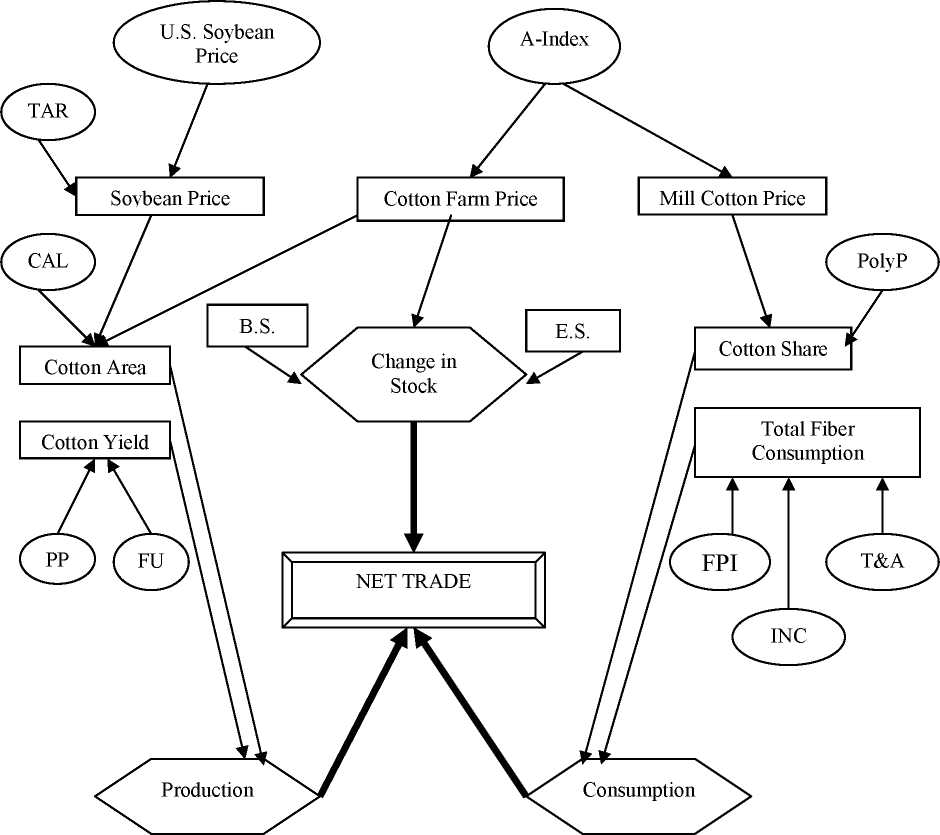Western Economics Forum, April 2004
the other explanatory variables. The textile and apparel price index was the second most important
factor affecting total fiber consumption.
The estimated model was utilized to generate a baseline forecast for cotton production, total fiber
consumption, cotton consumption, and net imports of cotton in Mexico. Forecasted values are shown in
Table 2. Cotton production is forecasted to remain at low levels of around 100,000 million pounds. Fiber
and cotton consumption are estimated to slowly increase from the year 2003 to the year 2005.
Increases in fiber and cotton consumption were found to be primarily driven by increases in Mexican
income. Furthermore, net imports under baseline conditions were forecasted to follow a slow-growth
pattern to the year 2005.

Figure 1. Simplified graphical representation of the implemented model.
Note: TAR stands for NAFTA tariffs; CAL stands for cotton area lagged one period; PP
stands for weighted average pesticide prices; FU stands for fertilizer use; B.S. and E.S.
stand for beginning and ending cotton stocks, respectively; PolyP stands for polyester price;
FPI stands for fiber price index; T&A stands for textile and apparel price index; and INC
stands for income.
More intriguing information
1. The ultimate determinants of central bank independence2. The name is absent
3. The name is absent
4. Second Order Filter Distribution Approximations for Financial Time Series with Extreme Outlier
5. The name is absent
6. Institutions, Social Norms, and Bargaining Power: An Analysis of Individual Leisure Time in Couple Households
7. The name is absent
8. Palkkaneuvottelut ja työmarkkinat Pohjoismaissa ja Euroopassa
9. The name is absent
10. The name is absent